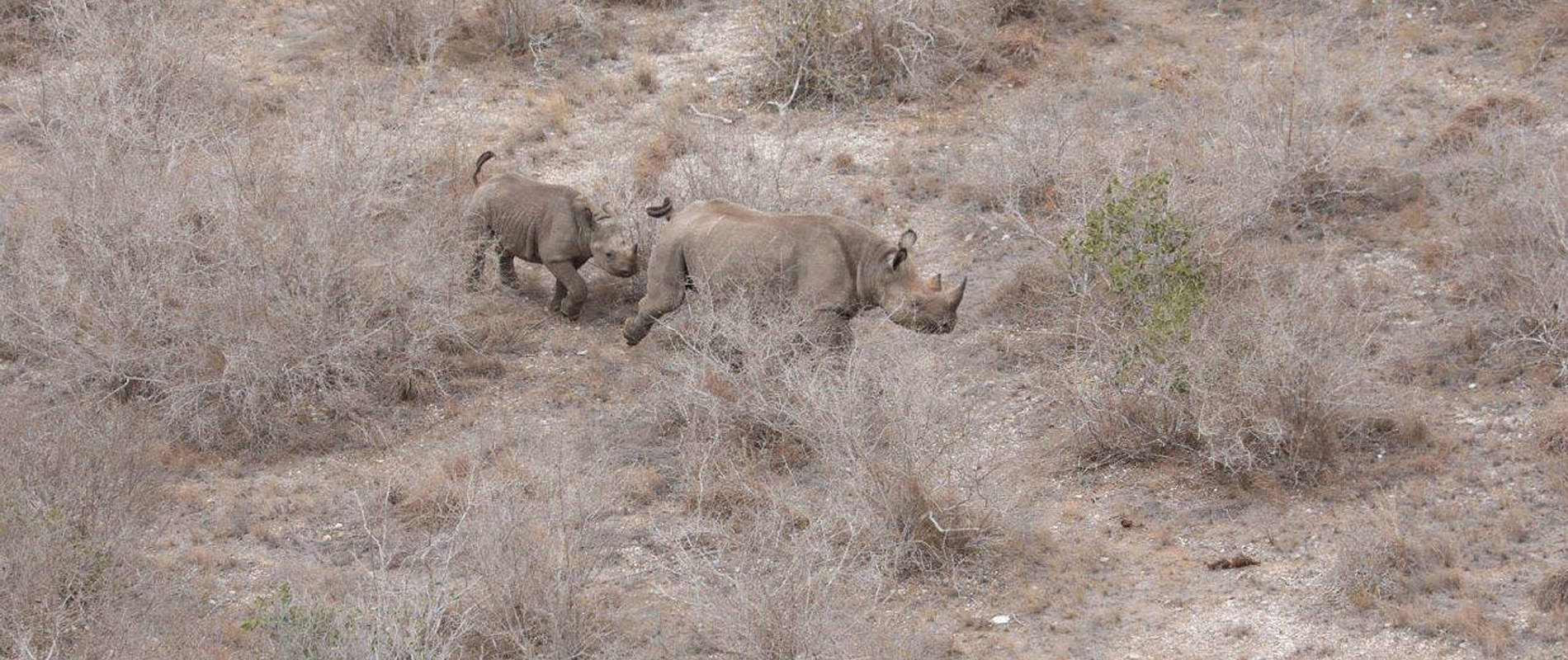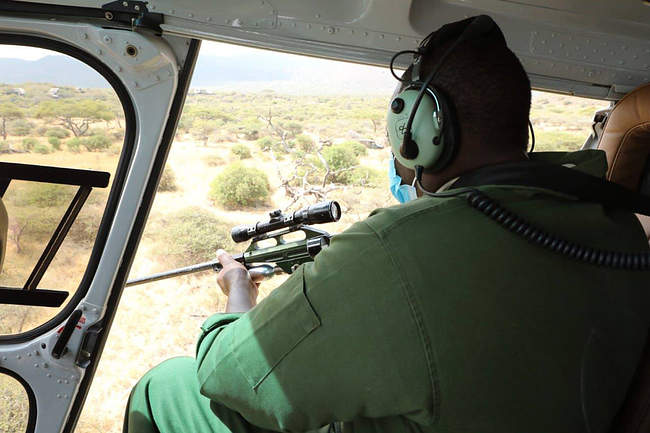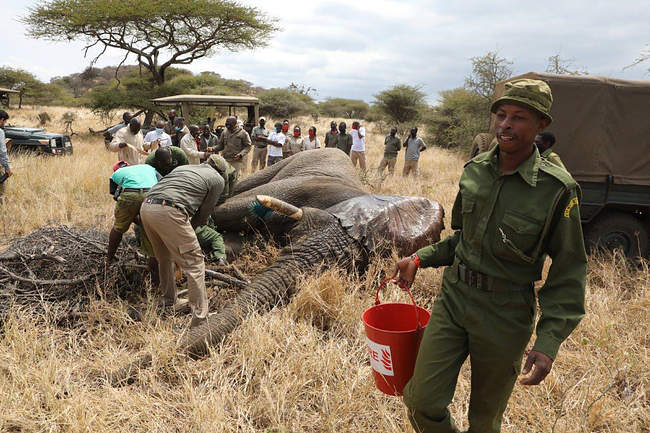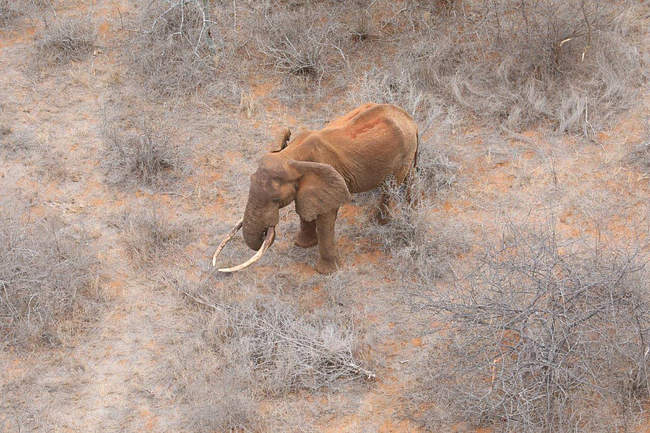Human-Elephant Conflict (HEC) showed no signs of reducing in July. Helicopters responded to a total of five incidences of HEC, in most cases successfully pushing elephants several kilometres out of contact with humans and back into protected areas.
It is rare to discover orphaned elephants from the air, but on a transfer flight from our Field HQ to Ithumba last month, our helicopter pilot spotted a lone calf wandering aimlessly along the Tiva River. After searching the area extensively for a family group and confirming that the calf was alone, he reported the situation to KWS. He returned to base to collect a team of experienced Keepers, who were able to successfully rescue the elephant, which was visibly dehydrated and emaciated, and airlifted it back to Kaluku for specialised care.
Three veterinary cases were attended in July with help from the Aerial Unit. In all three cases, their remote location required the SWT/KWS veterinary officer to be transferred rapidly, together with his support crew, in the Trust's Cessna 206. Two of these cases were in Ithumba and one was in the Chyulus.
There was a significant increase in livestock incursions, particularly in Tsavo East, where two major influxes occurred to the north of the Galana River and also on the Tiva River near Bisadi Falls. Livestock was recorded on 20 flights, with the majority being in the two above named locations. Multiple follow up flights were conducted to root out illegal livestock while KWS and SWT teams conducted operations to make arrests and remove them from the park. Charcoal activity was minimal, with the exception of Galana and Kishushe ranches where large kilns and dozens of charcoal sacks were observed ready for collection.
With regard to poaching, there were several old poachers' harbours discovered and, on two separate helicopter patrols, fresh foot prints were discovered and followed by ground teams, one resulting in the discovery of a fresh poachers' harbour. Two carcasses were found in July, the first was a fresh carcass found during an aerial patrol in Shimba Hills - a poaching victim. The second was a recent carcass with tusks intact and an unknown cause of death.

While there were isolated fires in the month of June, there was an increase in quantity and severity of fires in July. A total of four fires were attended to by aircrafts this month, some of these being follow-up flights to check for flareups the day after teams fought fires at night.
July was the month for Wild Dog sightings with eight separate sightings of wild dog, including two on the same flight. The largest pack had 20 individuals. The increase in wild dog in Tsavo in the last several years has been astounding and indicates the dramatic return of prey species in Tsavo, especially in the Northern Area. Other highlights included sightings of 1000-strong herds of buffalo in two different locations in Tsavo West. A large flock of 32 ostriches also caught one of our pilots eye, as well as concentrations of over 1000 zebras among other plains game along the Tanzania border.



